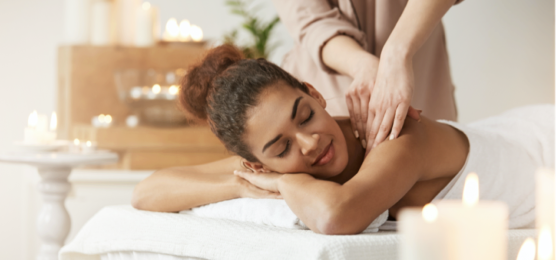Will a Calf Muscle Massage Relieve Calf Muscle Cramps?
Question:
I ran my first 5k a few months ago, and I totally caught the running bug. I’ve signed up for several more races including a relay and a trail run, and I’m having the time of my life. Unfortunately, I’ve noticed my calves cramping up a lot, particularly when I’m running on a more uneven surface. This happens no matter how well-hydrated I am or how much I warm up before my run. Is there a particular massage for calf muscles that can relieve my cramps?
Answer:
The most difficult part about treating cramps is understanding what’s causing them. It’s important to warm up before runs and make sure you’re well-hydrated, which it seems you’re already doing. You might also consider taking a look at your diet to make sure your cramps aren’t caused by a nutritional deficiency. If you don’t address the underlying cause, your cramps will return regardless.
That being said, it has been demonstrated that massage is an effective technique to relieve muscle spasms and cramps, as well as the soreness they leave behind.[1] For example, since patients on hemodialysis often experience lower leg muscle cramps, they were the target of a study published in the International Journal of Therapeutic Massage and Bodywork. Patients who received 20-minute massage three times a week for two weeks experienced significantly less cramping, leading researchers to conclude that massage was an effective way to address muscle cramping.[2]
Deep-tissue massage and Swedish massage are the two most common massage types used to combat muscle cramps and spasms.[3] If you’ve never had a massage before, you may want to start with a Swedish massage, which is gentler than deep-tissue massage. Swedish massage acts on the principle that poor circulation causes a build-up of waste products in your muscle tissue. This build-up leads to muscle weakness and fatigue, which eventually leads to cramping. The massage therapist uses a technique called effleurage – long, directional strokes with flattened hands and fingers – to increase the circulation in the area. In contrast, deep-tissue massage uses deep pressure to relieve built-up tension in the muscles.[4]
To treat cramps, it’s a good idea to schedule a massage soon after a run where you’ve experienced cramping. You can book a massage therapist to arrive at the location of your choosing in as little as an hour. Keep in mind that if your muscle is still actively spasming when the massage therapist arrives, massage may damage the muscle.[5] Communicate clearly with your massage therapist so they can choose the best techniques to provide you the relief you need. It’s also a good idea to schedule a follow-up massage a few days after a cramping episode, just to keep your muscles loose and increase blood flow to the area.
References:
[1] The Fit Institute Chicago: “Massage Therapy: Effective in Alleviating Muscle Spasms and Cramps,” http://thefitinstitutechicago.com/massage-therapy-muscle-spasms/
[2] International Journal of Therapeutic Massage and Bodywork: “Intradialytic Massage for Leg Cramps Among Hemodialysis Patients: a Pilot Randomized Controlled Trial,” https://www.ncbi.nlm.nih.gov/pmc/articles/PMC4868507/
[3] Physio.co.uk: “Reduced Muscle Spasm,” http://www.physio.co.uk/treatments/massage/benefits-of-massage/reduced-muscle-spasm.php
[4] Id.
[5] The Fit Institute Chicago: “Massage Therapy: Effective in Alleviating Muscle Spasms and Cramps,” http://thefitinstitutechicago.com/massage-therapy-muscle-spasms/
You Might Be Interested In These, As Well:
Not feeling like the same athlete you once were? Get an edge on the competition with a sports massage.
A shoulder massage can help alleviate pain. Find out which massage we recommend for shoulder pain.
Ready to book your massage?




